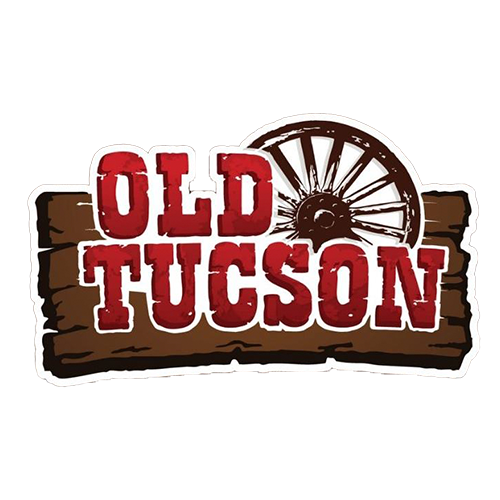- Ride With Us
- Packages
- Events
- THE POLAR EXPRESS™ Train Ride
- Winter Photographers' Special
- Romance on the Rails
- Shamrock Express
- Rio Grande Southern Galloping Goose #5 Excursions
- Hops & Hops
- Narrow Gauge Day
- D&SNGRR Brew Trains
- Cowboy Poetry Train
- Fall Photography Special 2024
- Snowdown Balloon Rally Train
- Ghost Crawl: Haunted Durango Train Museum Experience
- Wine & Rails
- Groups
- Explore
- Blog
- About Us
- Gift Shop
The Ultimate Durango to Grand Canyon Road Trip
If there’s one trip you’ve got to take in your lifetime it’s a road trip from Durango to the Grand Canyon. With stunning scenery, unique adventures, and many outdoor activities, you’ll have a memorable experience. You can travel from Durango, Colorado to the Grand Canyon countless times and never see the same thing twice.
While you can go on this road trip any time of year, we suggest going during the spring or fall, when the weather is a bit cooler. Plus, you may be able to catch some fall colors or spring flowers! It is possible to visit in the summer, but it is incredibly hot. Monsoon rains also make slot canyons a serious danger. It’s the most crowded time to visit the Grand Canyon.
A road trip from Durango, Colorado to the Grand Canyon is a spectacular journey through some of the most beautiful landscapes in the American Southwest. The road trip offers an unforgettable experience of the Southwest’s natural beauty and cultural heritage. Be sure to plan ahead, pack plenty of water and snacks, and allow plenty of time to enjoy the journey!
Seasons to Travel:
Spring or Fall
Distance:
511 Miles
States Covered:





The Durango & Silverton Narrow Gauge Railroad is a historic train that runs through the beautiful San Juan Mountains of southwestern Colorado. The train travels from Durango to the historic mining town of Silverton, offering stunning views of the rugged mountain landscape along the way.
The train follows the same route that was used to transport gold and silver from the mines to the smelters over a century ago. Today, the train is a popular attraction for visitors to the area, offering a unique and nostalgic way to experience the beauty of the region.
The train offers a variety of train rides, ranging from half-day excursions to full day trips. Some of the most popular trips include the historic steam train ride from Durango to Silverton and the Cascade Canyon Express.
The Durango Train is a unique and memorable way to experience the beauty and history of the San Juan Mountains. Whether you’re a history buff, a train enthusiast, or just looking for a fun and scenic adventure, the Durango & Silverton Narrow Gauge Railroad is a must-see attraction in southwestern Colorado.

Mesa Verde National Park is a beautiful and historic park located in southwestern Colorado, USA. The park is known for its well-preserved cliff dwellings, which were built by the Ancestral Pueblo people over 700 years ago. These cliff dwellings are some of the best-preserved examples of ancient architecture in North America, and they offer visitors a unique glimpse into the lives of the people who lived there long ago.
In addition to the cliff dwellings, Mesa Verde National Park offers a variety of outdoor activities, including hiking, camping, and wildlife watching. The park is also home to a variety of wildlife, including black bears, mountain lions, and elk.
One of the best ways to experience Mesa Verde National Park is through a ranger-led tour. These tours provide a more in-depth look at the park’s history and architecture, and they allow visitors to access areas of the park that are otherwise off-limits.
Overall, Mesa Verde National Park is a must-visit destination for anyone interested in ancient history, archaeology, or outdoor recreation. With its stunning views, fascinating history, and endless opportunities for adventure, Mesa Verde National Park is truly a national treasure.

Ute Mountain Ute Tribal Park is a protected area located in southwestern Colorado, USA, and is owned and operated by the Ute Mountain Ute Tribe. The park is home to a variety of cultural and archaeological sites that are of great significance to the Ute Mountain Ute people and offer visitors a unique and authentic experience.
Visitors to the park can explore a number of ancient structures, including cliff dwellings, kivas, and petroglyphs, many of which date back to the 12th and 13th centuries. The full day tour (which we highly recommend) visits four magnificent cliff dwellings. It requires a three-mile walk on unpaved trails and scaling ladders.
The park offers visitors a chance to learn about the tribe’s ancient past and modern way of life, and to experience the natural beauty of the American Southwest. If you’re interested in history, culture, and outdoor recreation, Ute Mountain Ute Tribal Park is definitely worth a visit.

Shiprock is a towering rock formation located in northwestern New Mexico, near the Arizona border. The formation is a prominent landmark in the region and is sacred to the Navajo people.
The rock formation rises nearly 1,600 feet above the surrounding desert, with its jagged peak visible for miles around. The formation was created over 30 million years ago during a volcanic eruption, and has since been eroded by wind and water.
The Navajo people call the formation “Tsé Bitʼaʼí”, which means “rock with wings”. According to Navajo legend, the rock was once a giant bird that carried the tribe to safety during a great flood.
Shiprock is located on Navajo land and is not open to the public without permission from the tribe. However, visitors can view the formation from several vantage points along nearby highways. Guided tours may also be available through authorized Navajo tour operators.
The easiest route is to take US-491. 7.5 miles south of the city of Shiprock, turn onto Indian Service Route 13. After another 7.5 miles you will turn right, leaving pavement onto hard dirt packed trails. Use your best judgement to get as close as you want, but it is important respect the land and stay on existing paths.

Valley of the Gods is a stunning landscape located in southeastern Utah, USA, known for its towering sandstone formations and beautiful red rock cliffs. This area is much less well-known and far less crowded, making it a perfect destination for those looking for a more peaceful and secluded outdoor experience.
Visitors can explore the area on foot, by car, or on horseback, taking in the stunning views of the surrounding landscape. The valley features a number of natural formations, including towering buttes, mesas, and spires, as well as a variety of wildlife, including mule deer, coyotes, and a variety of birds.
The area is also rich in Native American history and culture, and visitors can explore a number of ancient ruins and rock art sites located throughout the valley. Many of these sites are sacred to local tribes, and visitors are asked to treat them with respect and reverence.

Mexican Hat Rock is a distinctive rock formation located in southeastern Utah, near the town of Mexican Hat. The formation is named for its resemblance to a traditional Mexican sombrero hat.
The rock is composed of sandstone and was formed over millions of years of erosion. It is approximately 60 feet tall and sits atop a smaller base, making it a popular destination for rock climbers.
Visitors can take scenic drives through the surrounding desert and explore the area’s natural beauty and history. The town of Mexican Hat also offers a range of amenities for visitors, including lodging, dining, and outdoor recreation opportunities. The rock formation is accessible from several vantage points along nearby highways, and visitors are encouraged to take care when exploring the area due to its rugged terrain and extreme temperatures.

Goosenecks State Park is a small but stunning park located in the southeastern corner of Utah, USA. The park is named for its unique and beautiful natural feature, a series of deep, winding canyons that have been carved out by the San Juan River over millions of years.
Visitors to Goosenecks State Park can enjoy breathtaking views of the canyons from a number of overlooks located throughout the park. The overlooks offer stunning views of the winding river below, as well as the rugged and beautiful landscape that surrounds the park.
With its beautiful canyons, rugged landscape, and endless opportunities for adventure, Goosenecks State Park is truly a hidden gem of the American Southwest.

Monument Valley is a beautiful and iconic landscape located on the border between Arizona and Utah, USA. It is known for its towering sandstone rock formations, which rise up from the desert floor and create a stunning and otherworldly backdrop.
The valley is part of the Navajo Nation, and visitors can explore the area through guided tours led by local Navajo guides. The tours offer a unique and informative way to experience the landscape and learn about Navajo culture and history. You can also take a self-guided tour of the valley with a 17 mile valley drive.
Some of the most famous formations in Monument Valley include the Mittens, Elephant Butte, and the Three Sisters. Visitors can also explore the valley on foot through a number of hiking trails that offer stunning views of the surrounding landscape.
In addition to its natural beauty, Monument Valley has been featured in countless films, television shows, and advertisements, making it an iconic symbol of the American West. Visitors can even stay in one of the many traditional Navajo hogans located throughout the valley.
Overall, Monument Valley is a must-see destination for anyone interested in natural beauty, Native American culture, or the history of the American West. With its stunning rock formations, rich history, and endless opportunities for adventure, Monument Valley is truly a national treasure.

Navajo National Monument is a protected area in northern Arizona. The monument was established to preserve several ancient cliff dwellings built by the Ancestral Puebloan people, also known as the Anasazi.
The monument is located on the Navajo Nation Reservation and consists of two main canyon areas, Betatakin and Keet Seel. Both of these canyon areas contain ancient dwellings and artifacts that offer insight into the lives of the Ancestral Puebloans who lived in the region over 700 years ago.
Betatakin is the more accessible of the two canyon areas, with a trail leading down to the cliff dwelling. Keet Seel is a more remote site, accessible only by a strenuous 17-mile round-trip hike with a park ranger.
In addition to the ancient cliff dwellings, Navajo National Monument offers a variety of hiking trails, scenic drives, and opportunities for stargazing and wildlife viewing. The monument is also an important cultural site for the Navajo people, who have lived in the region for thousands of years.
Visitors are encouraged to take care when exploring the monument, as the terrain can be rugged and temperatures can be extreme. Camping is available at a nearby campground, and guided tours of the cliff dwellings may be available through the National Park Service.

Coal Mine Canyon is a scenic and remote canyon located in northern Arizona, near the Navajo Nation. The canyon is known for its colorful and unusual rock formations, shaped by millions of years of erosion.
The canyon is located on Navajo land and is not officially designated as a protected area. Visitors are welcome to explore the canyon, but are asked to respect the land and its resources.
Coal Mine Canyon offers hiking and photography opportunities, with several trails leading through the canyon and offering stunning views of the unique rock formations.
Due to its remote location, visitors should plan ahead and come prepared with plenty of water, food, and appropriate hiking gear. The canyon can also be difficult to access during inclement weather, so visitors should check road conditions before heading out.
Coal Mine Canyon is a lesser-known destination in northern Arizona, but its natural beauty and cultural significance make it a worthwhile stop for those exploring the region.

Lastly, no road trip to the Southwest is complete without a visit to the Grand Canyon! Explore the South Rim, take a guided tour, or hike down into the canyon for a unique perspective on this natural wonder.
Grand Canyon National Park is a protected area in northern Arizona, encompassing over 1.2 million acres of wilderness and the world-famous Grand Canyon. The park is one of the most popular and iconic natural landmarks in the United States.
The Grand Canyon is a massive gorge carved out over millions of years by the Colorado River. It is approximately 277 miles long, up to 18 miles wide, and over a mile deep in some places. The canyon is famous for its stunning panoramic views, geological formations, and diverse wildlife.
Visitors to the park can take advantage of a variety of activities and amenities, including hiking, camping, scenic drives, ranger-led programs, and more. The park is also home to a number of historic buildings and archaeological sites, dating back to ancient indigenous cultures.

© Durango & Silverton Narrow Gauge Railroad. All rights reserved.
Privacy Policy
Site developed by ![]() Agency Tourism Marketing
Agency Tourism Marketing










